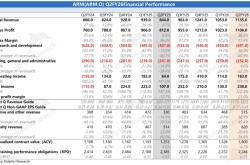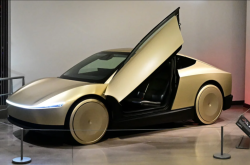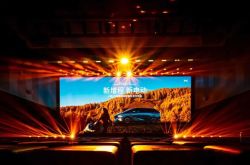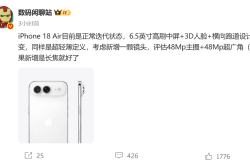Tesla's "Master Plan Part 4": An AI Blueprint or Merely a "Castle in the Air"?
![]() 09/05 2025
09/05 2025
![]() 607
607
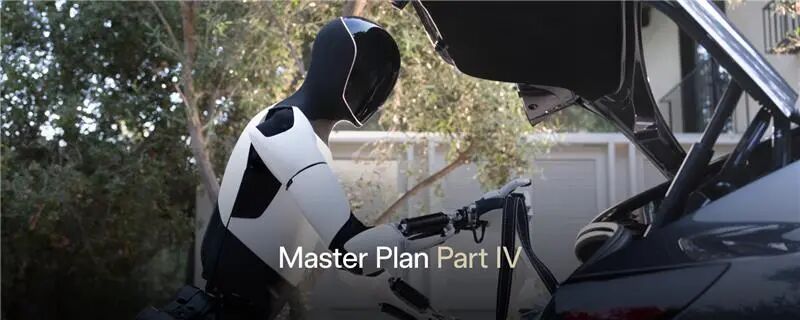
From electrifying transportation to embracing clean energy, it's hardly surprising that Tesla has now turned its attention to AI and robotics as its new development frontiers.
On September 2, Tesla officially unveiled its "Master Plan Part 4" on the X platform, centering around the vision of "sustainable abundance"—a goal to achieve boundless societal growth and equitable resource distribution through the seamless integration of artificial intelligence and robotics.
Since unveiling its initial Master Plan in 2006, Tesla has embarked on a transformative journey to reshape both transportation and energy landscapes. Now, with the release of Master Plan Part 4, Tesla is once again gazing into the future, striving to sketch out a new societal blueprint centered on "sustainable abundance" by deeply integrating AI into its existing business portfolios.
However, such a grand depiction seems somewhat nebulous.
01
Master Plan Part 4 Unveiled
Let's first delve into Tesla's comprehensive blueprint for Part 4.
Firstly, unlimited growth. The Master Plan posits that the development of one sector doesn't have to come at the expense of another's decline, that resource scarcities can be addressed through technological advancements and innovation, and that economic and social opportunities can be continuously expanded through development.
Secondly, innovation breaks through limitations. Drawing on the evolution of transportation from horse-drawn carriages to internal combustion engine vehicles and then to electric vehicles, Part 4 underscores that continuous innovation can dismantle technological barriers. For instance, Tesla has previously broken through battery technology limitations, steering transportation away from fossil fuel dependency.
Thirdly, technology solves real-world problems. Part 4 zeroes in on practical needs, such as autonomous driving enhancing traffic safety and efficiency, humanoid robots taking over monotonous or hazardous tasks, and solar and energy storage technologies boosting the availability of clean electricity.
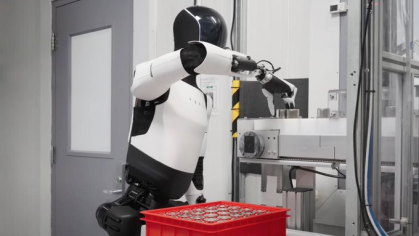
Fourthly, autonomous driving benefits all humanity. Part 4 asserts that the value of autonomous technology lies in enhancing human life, making daily existence safer and more enjoyable for everyone, which serves as Tesla's core criterion for developing and applying autonomy.
Fifthly, widespread adoption drives development. Tesla aims to create affordable, large-scale cutting-edge technology products that can foster social democratization, elevate everyone's quality of life, and enable more individuals to seize development opportunities.
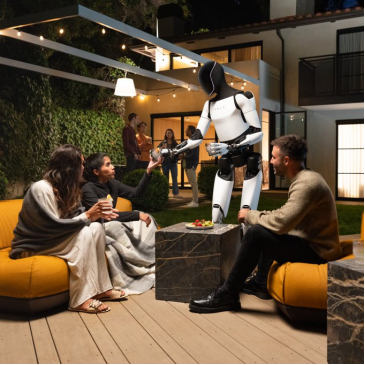

It's evident that Musk ties the goals of Master Plan Part 4 to "abundance for all," believing that autonomous vehicles, humanoid robots, combined with solar and battery energy storage, will collectively forge a brighter future.
02
The Chasm Between Vision and Reality
Just prior to the release of Master Plan Part 4, Musk once again took to social media to emphasize that the Optimus humanoid robot and FSD autonomous driving technology are the linchpins of Tesla's future value. He stated that Optimus is projected to contribute roughly 80% of the company's worth.
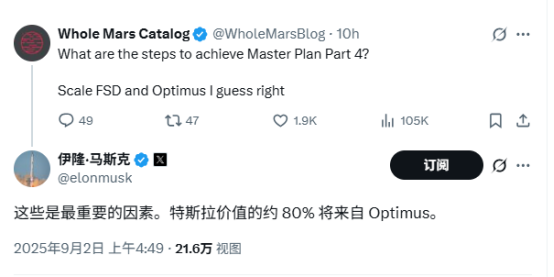
Source: Social Platform X
It's clear that Tesla has placed substantial bets on the development of robotics.
The ideal is grand, but reality is often unforgiving. Based on past experiences, not all of Tesla's promises have materialized, with numerous goals from the first three parts remaining unfulfilled. Looking back at the first part in 2006, Tesla pledged to use the profits from the Roadster sports car to produce affordable vehicles (Model S, Model 3), then introduce more mass-market models, and provide zero-emission power generation options (solar energy).
Nearly two decades have elapsed, and while the Roadster was indeed realized, and the Model S and Model 3 are on the market, a truly affordable mass-market model has yet to emerge. Recently, Reuters even disclosed that the Model 2 has been scrapped; the solar business has also failed to gain traction. Only two out of four steps have been accomplished.
The second part in 2016 was equally ambitious: solar roofs, a comprehensive product lineup, autonomous driving ten times safer than humans, and a feature for idle vehicles to generate income.
But the reality paints a different picture: solar roofs have fallen short of expectations and are challenging to deploy; while the product lineup has expanded to include the Model Y, Cybertruck, and Semi, Semi sales have been sluggish, and the Robovan has yet to enter mass production; Tesla's FSD is still at Level 2; Robotaxi is just getting off the ground, with Tesla claiming to launch Level 4 autonomous vehicles in Austin this year, but nothing has materialized yet. Only the second step has been partially completed.

The third part in 2023 shifted focus to a global energy transition vision, encompassing grid renewabilization, comprehensive electrification of transportation, widespread adoption of heat pumps, industrial electrification and hydrogen, sustainable aviation fuel, and building a sustainable energy economy. As media outlets commented, it resembles more of a policy white paper than a corporate plan. Apart from electric vehicles, Tesla has not made substantial inroads into other fields. Only the second step has seen meaningful progress.
03
Challenges and Prospects
This time around, Tesla's Master Plan Part 4 remains highly ambitious, yet controversy persists. Tesla is grappling with internal and external challenges such as declining sales, diminishing profits, talent exodus, and sluggish progress in the full commercialization of FSD. Launching a new plan at this juncture is seen by some as an attempt to divert attention.
Electrek commentator Fred Lambert directly labeled Master Plan Part 4 as a "hodgepodge of vague AI promises" lacking specific execution paths and implementation steps. He also pointed out that Tesla's previous three Master Plans have not been fully realized, severely questioning its execution capability and viewing the fourth part's reliance on AI and robotics as a "pipe dream" without substantive backing.
Therefore, how Tesla delivers on its promises is the focal point of investors' attention.
Currently, the main areas of skepticism from netizens and investors towards Tesla include: whether Optimus can achieve mass production and large-scale commercialization on schedule; whether Tesla can attract and retain top AI experts in a fiercely competitive talent market; and whether the company can maintain strategic focus and execution amid criticism.
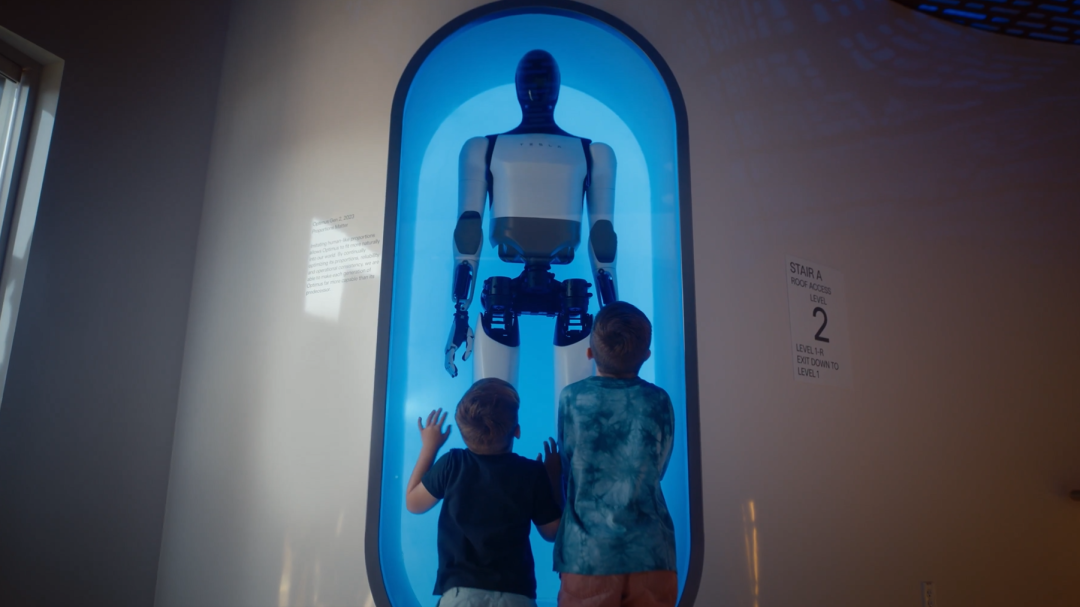
Nevertheless, it cannot be denied that Tesla does possess the ability to innovate and break through. Whether Master Plan Part 4 can bring "sustainable abundance" to Tesla and even all of humanity, or ultimately become another utopian vision that remains unfulfilled, only time will tell.
In a rapidly evolving technological landscape with intensifying competition, Tesla needs to prove that it is not only adept at drawing beautiful blueprints but also capable of turning visions into reality. Otherwise, Master Plan Part 4 may become Tesla's grandest fantasy in history, rather than a truly revolutionary roadmap.
-END-

